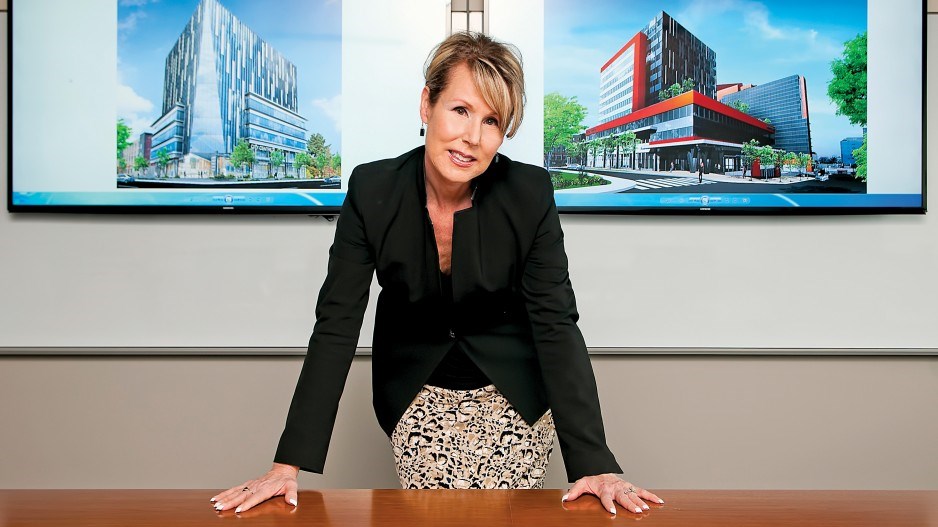In the Lower Mainland’s battle to attract new businesses, Surrey has one thing nobody else can offer regarding demographics: an abundance of young people.
Anita Huberman, Surrey Board of Trade CEO, laid out how the city’s youth could be its defining aspect moving forward.
“Specifically this is where the human capital is,” said Huberman. “Thirty per cent of our population is under the age of 19.”
According to a Surrey Cares Community Foundation study, the city also has a higher percentage of people aged 10 to 24 than the provincial average. Surrey also contains one in four Metro Vancouverites under the age of 19. However, Surrey’s youth unemployment rate has increased 50% since 2006. In responding to the Surrey Cares study, only 14% of those between the ages of 20 and 24 said they were employed.
Bill Cunningham, chair of the Downtown Surrey Business Improvement Association and district vice-president for TD Commercial Banking, said if Surrey can optimize its youth labour force, the sky is the limit.
However, he added, the city needs to start catering to a workforce with very different ideals from those of baby boomers.
The majority of the workers at Cunningham’s Surrey office fall within the millennial category (18 to 35), and one thing he’s noticed is they value the “life” side of the work-life balance much more than the “work” side.
“That ‘life’ part means something different to every millennial,” he said. “There are ones that are super active, and they’re all about the outdoors and sports. And then there’s those for whom that ‘life’ is gaming, or being an avid sports fan. So that component is very different in all of them, but it’s also very important.”
Cunningham said he has a few employees who work at his office on King George Boulevard in downtown Surrey who live a few blocks away in some of the new highrise apartments that have sprouted up in the area.
Indeed, Surrey remains a relatively affordable place to live compared with many of its Lower Mainland counterparts. According to RentBoard.ca, the average rent for a one-bedroom in the city is $901 per month. In Vancouver, according to PadMapper, the average rental rate for a one-bedroom is $1,900 – the highest of any municipality in the country.
Cunningham said millennials, in particular, want to live in downtown cores but also want to be able to afford the perks that come along with it.
“For them, having everything around and close to them is huge,” he said. “That’s a huge part of the lifestyle.”
According to the provincial government, B.C.’s population is aging faster than the national average, and the number of people aged 65 and over is growing four times faster than the number of working-age people (25 to 64).
According to Statistics Canada, monthly employment for youth aged 15 to 24 has been at some of the lowest levels since September 2008, before the economic recession. Rowena Rizzotti, vice-president of health care and innovation at Surrey’s Health and Technology District, said Surrey’s future may lie primarily in expanding its STEM (science, technology, engineering and mathematics) workforce.
“The fact that Surrey has this asset of youth, and children that will become youth – there is a future talent pool that can support this growing sector in British Columbia,” she said.
According to City of Surrey statistics, the city is adding approximately 800 people a month to its population and could surpass Vancouver by 2030.
As an example, Rizzotti pointed to the Regent Christian Academy, a kindergarten to Grade 12 international school that moved into the Health and Technology District’s City Centre 1 building this spring. The idea, she said, is to start integrating students into various scientific research disciplines as early as possible.
This, she added, works in a community like Surrey because there’s a vast youthful demographic to draw from.
“The wheelhouse right now and the asset that Surrey has is the population, and a continued pool of young people that will be hungry and have an appetite for experiential learning,” she said.




